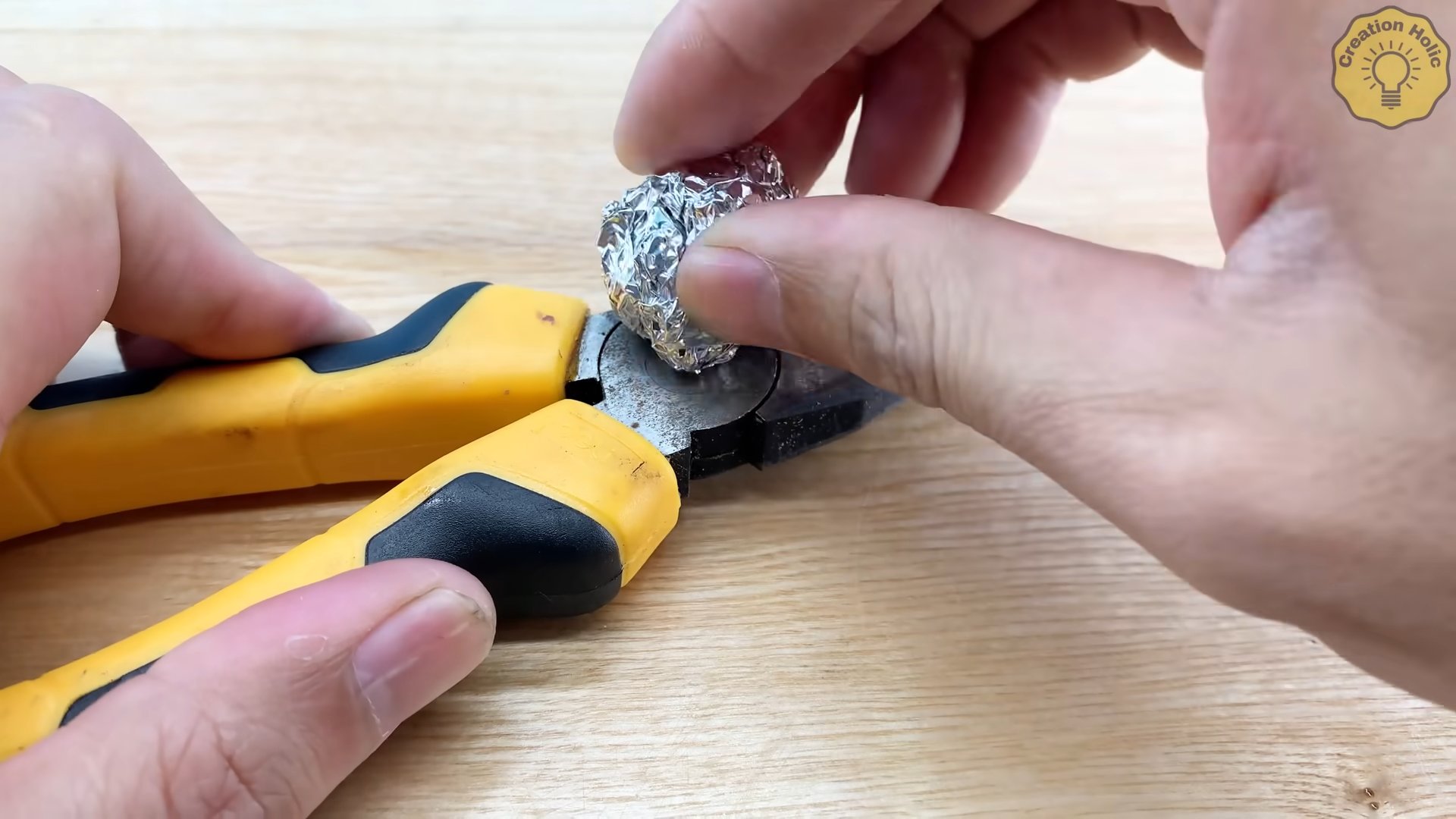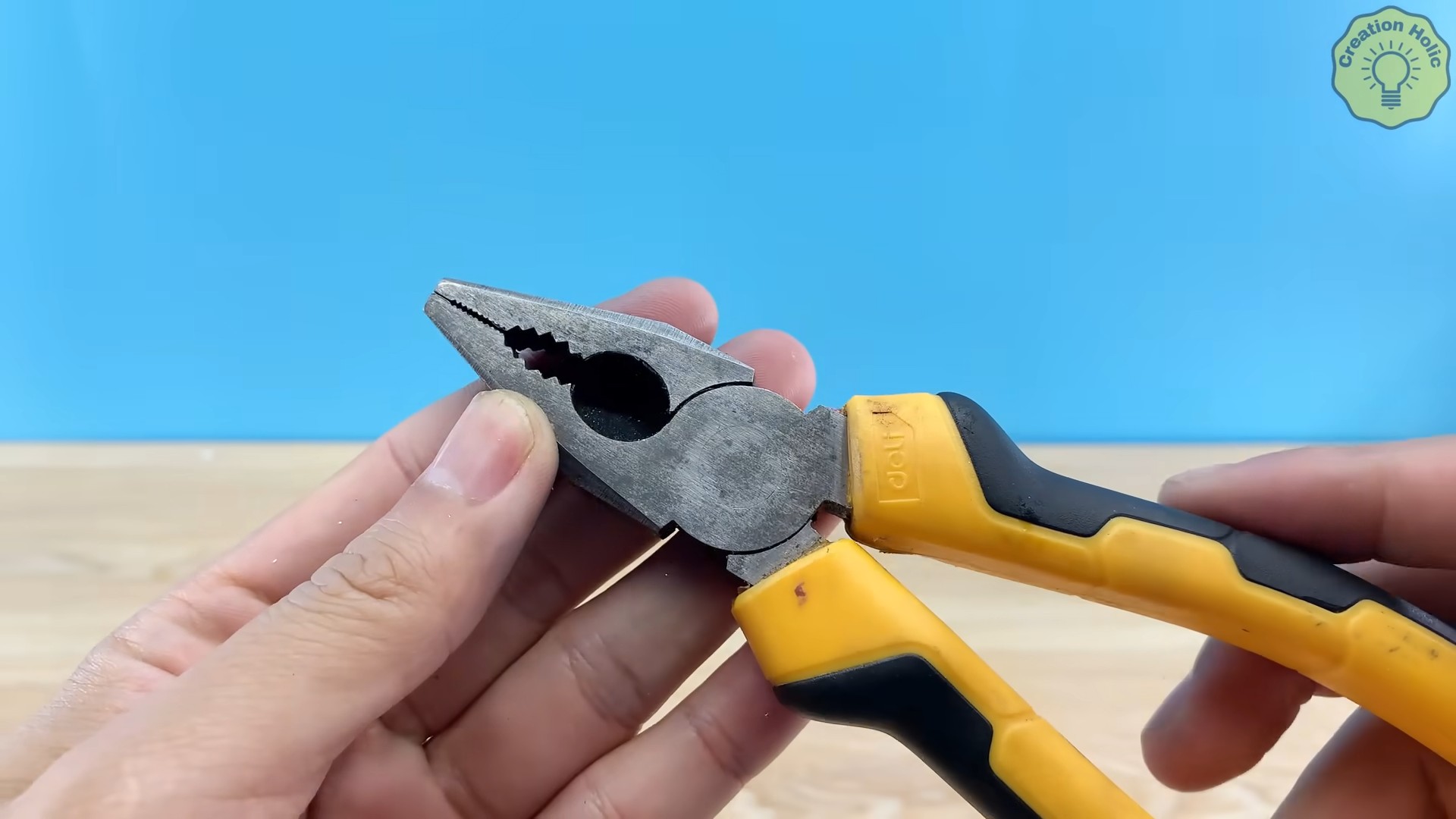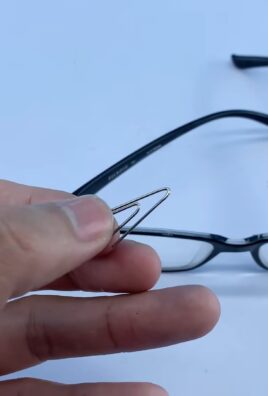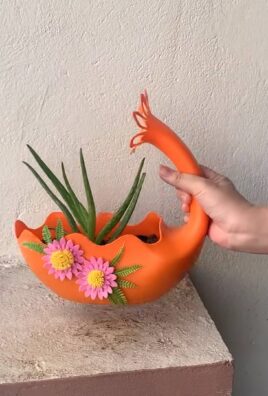Brilliant DIY Hacks – who doesn’t love them? Imagine transforming your humble garden into a flourishing oasis, not with expensive tools or professional help, but with clever, cost-effective solutions you create yourself! For centuries, resourceful gardeners have passed down ingenious tips and tricks, born from necessity and a deep connection to the land. From ancient Egyptians using ingenious irrigation systems to the “victory gardens” of World War II, the spirit of DIY gardening has always been about resourcefulness and self-sufficiency.
In today’s world, where sustainability and saving money are more important than ever, mastering these brilliant DIY hacks is a game-changer. Are you tired of battling pests, struggling with poor soil, or simply dreaming of a more productive and beautiful garden? I know I was! That’s why I’ve compiled a collection of my favorite, tried-and-true DIY gardening hacks that will help you maximize your yields, minimize your expenses, and create a garden you’ll be proud of. Get ready to unleash your inner gardener and discover the magic of DIY!

Transform Your Home with These Amazing DIY Hacks!
Hey there, fellow DIY enthusiasts! I’m so excited to share some of my favorite DIY hacks that will not only save you money but also add a personal touch to your home. Get ready to roll up your sleeves and unleash your inner creativity!
Hack 1: Turn Old T-Shirts into Reusable Shopping Bags
Tired of plastic bags cluttering your kitchen? This hack is a fantastic way to repurpose old t-shirts and create eco-friendly shopping bags. Plus, it’s super easy!
What you’ll need:
* An old t-shirt (preferably a sturdy cotton one)
* Sharp scissors
* A ruler or measuring tape (optional)
* A marker or pen (optional)
Step-by-step instructions:
1. Prepare the T-Shirt: Lay your t-shirt flat on a table or any even surface. Smooth out any wrinkles to ensure accurate cutting.
2. Cut off the Neckline: Using your scissors, carefully cut off the neckline of the t-shirt. You can choose to cut a wide scoop neck or a more conservative round neck, depending on your preference. I usually go for a wider scoop neck for easier access to the bag’s contents.
3. Cut off the Sleeves: Next, cut off the sleeves of the t-shirt. Follow the seam lines as closely as possible to create clean, even armholes. These will become the handles of your shopping bag.
4. Create the Fringe (Bottom): This is where the magic happens! At the bottom of the t-shirt, cut strips that are approximately 2-3 inches long and about 1 inch apart. These strips will form the fringe that we’ll tie together to create the bottom of the bag. You can use a ruler and marker to pre-mark the lines for more precise cuts, but I usually just eyeball it.
5. Tie the Fringe: Now, take two adjacent strips of fringe and tie them together in a secure knot. Repeat this process all the way around the bottom of the t-shirt, ensuring that each strip is tied to its neighbor.
6. Second Layer of Knots (Optional but Recommended): For extra security and to prevent the bag from unraveling, tie a second layer of knots. This time, tie each knot to the knot next to it. This creates a stronger and more durable bottom for your bag.
7. Reinforce the Handles (Optional): If you want to reinforce the handles, you can sew a few stitches along the armhole seams. This will prevent the handles from stretching or tearing, especially when carrying heavy items. I sometimes use a simple running stitch with a needle and thread.
8. Enjoy Your Reusable Bag! That’s it! You’ve successfully transformed an old t-shirt into a stylish and eco-friendly shopping bag. Now you can proudly carry your groceries or other items in your handmade creation.
Hack 2: DIY Coffee Filter Flowers
Add a touch of elegance to your home with these delicate and surprisingly easy-to-make coffee filter flowers. They’re perfect for decorating vases, wreaths, or even gift wrapping.
What you’ll need:
* Coffee filters (white or brown, depending on your preference)
* Scissors
* Hot glue gun and glue sticks
* Floral wire or pipe cleaners
* Food coloring or watercolor paints (optional, for adding color)
* A small bowl or container for mixing paint (if using)
* A paintbrush (if using)
Step-by-step instructions:
1. Prepare the Coffee Filters: Stack 6-8 coffee filters together. The more filters you use, the fuller your flower will be.
2. Fold the Stack: Fold the stack of coffee filters in half, then in half again, and then in half one more time. You should now have a cone-shaped wedge.
3. Shape the Petals: Using your scissors, round off the top edge of the cone to create the shape of flower petals. You can experiment with different shapes and sizes to create various flower styles. For a more realistic look, try creating slightly irregular petal shapes.
4. Unfold and Separate: Carefully unfold the coffee filters. You should now have a stack of individual petal shapes.
5. Add Color (Optional): If you want to add color to your flowers, now is the time. In a small bowl, mix a few drops of food coloring or watercolor paint with a small amount of water. Using a paintbrush, gently apply the colored water to the coffee filter petals. You can create ombre effects by applying more color to the base of the petals and less to the tips. Let the petals dry completely before proceeding.
6. Assemble the Flower: Take one coffee filter petal and roll it tightly to form the center of the flower. Secure the rolled petal with a small dab of hot glue.
7. Add More Petals: One by one, add more coffee filter petals around the center, overlapping them slightly. Secure each petal with a small dab of hot glue. Continue adding petals until you achieve the desired fullness and shape for your flower.
8. Attach the Stem: Take a piece of floral wire or a pipe cleaner and bend one end into a small hook. Apply a generous amount of hot glue to the base of the flower and insert the hooked end of the wire or pipe cleaner into the glue. Hold it in place until the glue sets.
9. Finishing Touches: Once the glue has dried completely, you can fluff the petals and adjust their shape to create a more natural look. You can also add a few drops of essential oil to the flower for a subtle fragrance.
10. Display Your Flowers! Your beautiful coffee filter flowers are now ready to be displayed! Arrange them in a vase, use them to decorate a wreath, or add them to gift wrapping for a special touch.
Hack 3: Create a Chalkboard Wall
Transform any wall into a creative canvas with this fun and functional DIY chalkboard wall. It’s perfect for kitchens, playrooms, or home offices.
What you’ll need:
* Chalkboard paint (available at most hardware stores)
* Primer (if your wall is not already smooth and painted)
* Paint roller and tray
* Paintbrushes (for edges and corners)
* Painter’s tape
* Sandpaper (if needed to smooth the wall)
* Drop cloth or plastic sheeting
* Chalk
Step-by-step instructions:
1. Prepare the Wall: This is the most important step! Ensure the wall is clean, dry, and smooth. If there are any imperfections, sand them down with sandpaper. Wipe down the wall with a damp cloth to remove any dust.
2. Apply Primer (If Necessary): If your wall is not already painted or has a glossy finish, apply a coat of primer. This will help the chalkboard paint adhere properly. Let the primer dry completely according to the manufacturer’s instructions.
3. Tape Off the Area: Use painter’s tape to carefully tape off the area you want to turn into a chalkboard. Make sure the tape is applied straight and securely to prevent paint from bleeding underneath.
4. Protect the Surrounding Area: Cover the floor and any nearby furniture with a drop cloth or plastic sheeting to protect them from paint splatters.
5. Apply the First Coat of Chalkboard Paint: Pour some chalkboard paint into the paint tray. Using a paint roller, apply a thin, even coat of chalkboard paint to the wall. Use a paintbrush to paint the edges and corners.
6. Let it Dry: Allow the first coat of chalkboard paint to dry completely according to the manufacturer’s instructions. This is crucial for a smooth and durable finish.
7. Apply the Second Coat: Apply a second coat of chalkboard paint, again using a thin, even layer. This will ensure good coverage and a consistent chalkboard surface.
8. Let it Dry Completely: Allow the second coat of chalkboard paint to dry completely for at least 24 hours, or as recommended by the manufacturer.
9. Remove the Painter’s Tape: Carefully remove the painter’s tape, pulling it away from the wall at a 45-degree angle.
10. Season the Chalkboard: Before using your new chalkboard wall, you need to season it. Rub the side of a piece of chalk all over the surface, covering it completely. Then, use a clean cloth or eraser to wipe off the chalk. This will create a slightly textured surface that will prevent ghosting when you erase.
11. Start Creating! Your chalkboard wall is now ready to be used! Grab some chalk and let your creativity flow.
Hack 4: Upcycle Glass Jars into Stylish Storage Containers
Don’t throw away those empty glass jars! With a little creativity, you can transform them into stylish and functional storage containers for your kitchen, bathroom, or office.
What you’ll need:
* Empty glass jars (various sizes and

Conclusion
So, there you have it! This brilliant DIY hack isn’t just a clever trick; it’s a game-changer for anyone looking to simplify their life, save money, and add a touch of personalized flair to their everyday routines. We’ve explored how this simple technique can transform mundane tasks into enjoyable, efficient experiences. From decluttering your workspace to creating personalized gifts, the possibilities are truly endless.
The beauty of this DIY approach lies in its adaptability. Feel free to experiment with different materials, colors, and techniques to tailor it to your specific needs and preferences. For instance, if you’re using this hack for organization, consider incorporating labels or color-coding to further enhance its effectiveness. If you’re using it for crafting, explore different embellishments and textures to create unique and eye-catching designs. Don’t be afraid to think outside the box and let your creativity shine!
Consider these variations to truly make this hack your own:
* **The Eco-Friendly Twist:** Opt for recycled or upcycled materials whenever possible to minimize your environmental impact. Old t-shirts, plastic bottles, and cardboard boxes can all be repurposed into fantastic DIY creations.
* **The Minimalist Approach:** Embrace simplicity by focusing on functionality and avoiding unnecessary embellishments. A clean and streamlined design can be just as effective as a more elaborate one.
* **The Collaborative Project:** Involve your friends and family in the DIY process for a fun and rewarding bonding experience. Share ideas, delegate tasks, and celebrate your collective accomplishments.
* **The Seasonal Update:** Adapt your DIY creations to reflect the changing seasons. Use festive colors and materials for holidays, or incorporate natural elements like leaves and flowers for a touch of seasonal charm.
Ultimately, the success of this brilliant DIY hack depends on your willingness to experiment and embrace the creative process. Don’t be discouraged if your first attempt isn’t perfect. Every mistake is a learning opportunity, and with a little practice, you’ll be amazed at what you can achieve.
We wholeheartedly encourage you to try this DIY trick for yourself and discover the many benefits it has to offer. We are confident that you’ll find it to be a valuable addition to your toolkit of life hacks.
But don’t just take our word for it! We’re eager to hear about your experiences with this DIY hack. Share your tips, tricks, and variations in the comments section below. Let us know how you’ve adapted it to suit your needs and what challenges you’ve overcome. Your feedback will not only inspire other readers but also help us to refine and improve this guide for future users.
So, go ahead and give it a try! Unleash your inner DIY enthusiast and experience the satisfaction of creating something amazing with your own two hands. We can’t wait to see what you come up with! Remember to use the hashtag #BrilliantDIYHacks when sharing your creations on social media so we can all admire your ingenuity.
Frequently Asked Questions (FAQ)
What exactly is considered a “brilliant DIY hack” in this context?
A brilliant DIY hack, as we’re using the term, refers to a simple, cost-effective, and often ingenious solution to a common problem or task, achieved through creative use of readily available materials and techniques. It’s about finding a smarter, easier, and more personalized way to accomplish something. It’s not just about doing it yourself; it’s about doing it *better* yourself.
What if I don’t have all the materials listed? Can I substitute them?
Absolutely! One of the best things about DIY projects is the flexibility to adapt and improvise. If you don’t have a specific material on hand, look around your home for alternatives. For example, if the instructions call for a specific type of glue, you might be able to use another adhesive that you already have, as long as it’s suitable for the materials you’re working with. Similarly, you can often substitute different types of fabric, paper, or other crafting supplies. The key is to be creative and resourceful. Just make sure that any substitutions you make are safe and appropriate for the intended use of the finished product.
I’m not very crafty. Is this DIY hack still for me?
Definitely! This particular brilliant DIY hack is designed to be accessible to people of all skill levels, even those who consider themselves “not crafty.” The steps are straightforward, and the materials are easy to work with. Don’t be intimidated by the word “DIY.” It’s all about learning and experimenting. Start with a small, simple version of the project, and gradually work your way up to more complex variations as you gain confidence. Remember, the goal is to have fun and create something that you’re proud of, regardless of your skill level.
How much time will this DIY hack take to complete?
The time required to complete this DIY hack will vary depending on the specific project you’re undertaking and your level of experience. However, most variations can be completed in a relatively short amount of time, typically ranging from a few minutes to a couple of hours. If you’re a beginner, it’s always a good idea to allocate a little extra time to allow for mistakes and adjustments. As you become more familiar with the process, you’ll be able to complete the projects more quickly and efficiently.
Is this DIY hack safe for children to participate in?
Safety is always a top priority when it comes to DIY projects, especially when children are involved. While this brilliant DIY hack is generally safe, it’s important to take certain precautions to minimize the risk of accidents. Always supervise children closely when they’re working with tools or materials that could be hazardous. Make sure they understand the proper way to use the tools and materials, and that they’re wearing appropriate safety gear, such as gloves or eye protection. Choose non-toxic materials whenever possible, and avoid using sharp objects or power tools unless you’re confident that the children can handle them safely.
Where can I find more inspiration for variations of this DIY hack?
There are countless resources available online and offline to help you find inspiration for variations of this DIY hack. Websites like Pinterest, Instagram, and YouTube are treasure troves of DIY ideas, with countless tutorials and examples to spark your creativity. You can also find inspiration in magazines, books, and craft fairs. Don’t be afraid to experiment and try new things. The best way to find inspiration is to simply start creating and see where your imagination takes you.
What if my finished project doesn’t look exactly like the pictures?
That’s perfectly okay! In fact, it’s part of the beauty of DIY projects. Each project is unique and reflects the individual style and creativity of the person who made it. Don’t strive for perfection. Instead, embrace the imperfections and celebrate the fact that you created something original and one-of-a-kind. If you’re not happy with the way your project turned out, don’t give up. Learn from your mistakes and try again. With a little practice, you’ll be amazed at what you can achieve.
How can I share my finished project with others?
We would love to see your finished projects! You can share them on social media using the hashtag #BrilliantDIYHacks. You can also post pictures and descriptions of your projects in the comments section below. We encourage you to share your tips, tricks, and variations with other readers. Your feedback will not only inspire others but also help us to refine and improve this guide for future users.





Leave a Comment